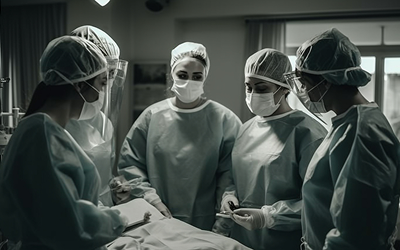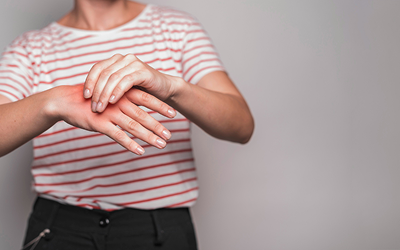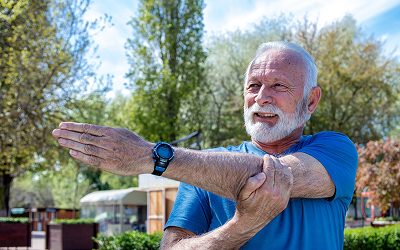We've all had those moments, gazing out a window, dreaming of fantastical abilities – flight, underwater breathing. While we may not possess superpowers, nature has provided us....
Read MoreBeyond Organ Transplants: The Transformative Potential of UC-MSC Transplantation

While organ transplantation has revolutionized medicine, a less familiar yet equally powerful approach is stem cell transplantation. At Happy Valley, we’re exploring the vast potential of this therapy to address a wide range of medical conditions.
Stem cell transplantation involves replacing damaged or dying cells with healthy new ones, offering a unique avenue for tissue repair and regeneration. This approach differs from organ transplantation, which replaces entire organs.
Understanding Transplantation Therapy:
- Organ Transplantation: Replaces damaged organs with healthy ones from donors.
- Stem Cell Transplantation: Replaces damaged cells, often in bone marrow, to treat blood-related diseases and beyond.
Transplant vs. infusion
- Infusion: Introduces stem cells intravenously, allowing them to circulate and reach
target areas. - Transplantation: Delivers stem cells directly to specific target tissues, often with
specialized preparation.
Stem cell transplants can be: - Autologous: Using the patient’s own stem cells.
- Allogenic: Using stem cells from a donor.
The Power of UC-MSCs:
Why UC-MSCs?
- They can differentiate into various cell types.
- They possess immunomodulatory properties.
- They promote tissue repair and regeneration.
- They multiply rapidly.
- They have a low risk of triggering immune responses.
- They are easily collected.
UC-MSC Transplantation: Expanding Clinical Applications:
Research indicates that UC-MSC transplantation can:
- mprove lung recovery in COVID-19 patients by reducing inflammation.
- Reduce inflammation in various conditions, including liver disease, arthritis, andautoimmune diseases.
- Repair damaged tissues in organs throughout the body.
- Regenerate cells in arthritis, heart disease, and spinal cord injuries.
- Support insulin production and tissue repair in diabetes.
- Modulate the immune system in autoimmune conditions.
- Improve brain function and motor skills in cerebral palsy patients.
Happy Valley's Approach:
At Happy Valley, we’re committed to exploring the transformative potential of UC-MSC transplantation. By harnessing the regenerative power of these cells, we aim to provide innovative, personalized therapies that address a wide range of medical conditions.
Works Cited:
- Organ Donation & Transplantation. (n.d.). Cleveland Clinic. Retrieved August 29, 2024, from https://my.clevelandclinic.org/health/treatments/11750-organ-donation-and-transplantation
- Types of Stem Cell and Bone Marrow Transplants. Retrieved August 29, 2024, from https://www.cancer.org/cancer/managing-cancer/treatment-types/stem-cell-transplant/types-of-transplants.html
- Trounson, A., & McDonald, C. (2015). Stem Cell Therapies in Clinical Trials: Progress and Challenges. Cell stem cell, 17(1), 11–22. https://doi.org/10.1016/j.stem.2015.06.007
- Copelan, E. A. (2006). Hematopoietic stem-cell transplantation. New England Journal of Medicine, 354(17), 1813-1826. https://doi.org/10.1056/NEJMra052638
- Li, Z., Hu, X., & Zhong, J. F. (2019). Mesenchymal Stem Cells: Characteristics, Function, and Application. Stem cells international, 2019, 8106818. https://doi.org/10.1155/2019/8106818
- Nishimura, T., Yamaguchi, S., Yoshimura, K., Rubinstein, P., & Takahashi, T. A. (2011). Isolation and characterization of mesenchymal stem cells from human umbilical cord blood: reevaluation of critical factors for successful isolation and high ability to proliferate and differentiate to chondrocytes as compared to mesenchymal stem cells from bone marrow and adipose tissue. Journal of cellular biochemistry, 112(4), 1206–1218. https://doi.org/10.1002/jcb.23042
- Nagamura-Inoue, T., & He, H. (2014). Umbilical cord-derived mesenchymal stem cells: Their advantages and potential clinical utility. World journal of stem cells, 6(2), 195–202. https://doi.org/10.4252/wjsc.v6.i2.195
- Vu, N. B., & Van Pham, P. (2022). Umbilical cord-derived mesenchymal stem cell transplantation for COVID-19 patients: long-term benefits for lung regeneration. Biomedical Research and Therapy, 9(2), 4950-4952. https://bmrat.com/index.php/BMRAT/article/view/725
- Xie, Q., Liu, R., Jiang, J. et al. What is the impact of human umbilical cord mesenchymal stem cell transplantation on clinical treatment?. Stem Cell Res Ther 11, 519 (2020). https://doi.org/10.1186/s13287-020-02011-z
- Gu, J., Huang, L., Zhang, C., Wang, Y., Zhang, R., Tu, Z., … & Liu, L. (2020). Therapeutic evidence of umbilical cord-derived mesenchymal stem cell transplantation for cerebral palsy: a randomized, controlled trial. Stem Cell Research & Therapy, 11, 1-12. https://doi.org/10.1186/s13287-019-1545-x
You Might Also Like
The many benefits of MSCs on bone flaws and cartilage damage
It’s just a fact of life that as you get older, pains start to creep up in places they didn’t used to be. Joints begin to ache from just a little use, and getting up from your favorite chair, or...
Read MoreEmbracing Graceful Aging: The Role of UC-MSCs
As we navigate the journey of aging, maintaining vitality and well-being becomes paramount. At Happy Valley, we're exploring innovative approaches to support healthy physical aging.....
Read MoreRevolutionizing Autoimmune Treatment: Targeting Peyer’s Patches with UC-MSCs and Exosomes
Autoimmune diseases, where the body's immune system mistakenly attacks healthy tissues, present a significant challenge. At Happy Valley, we're exploring cutting-edge regenerative medicine approaches to address these conditions....
Read MoreBeyond Organ Transplants: The Transformative Potential of UC-MSC Transplantation
While organ transplantation has revolutionized medicine, a less familiar yet equally powerful approach is stem cell transplantation. At Happy Valley, we're exploring the vast potential of this therapy to address a wide range of medical conditions....
Read More



